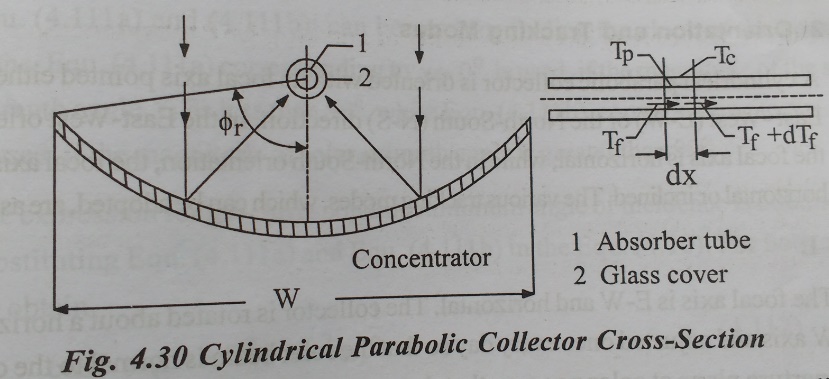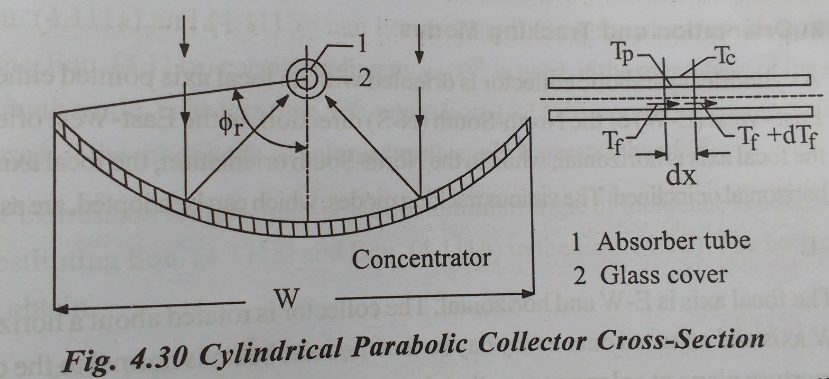Chapter: Electric Energy Generation and Utilisation and Conservation : Solar Radiation and Solar Energy Collectors
Cylindrical Parabolic Concentrating Collector

CYLINDRICAL
PARABOLIC CONCENTRATING COLLECTOR
INTRODUTION
The
cylindrical parabolic collector (CPC) is also referred to a parabolic trough or
a Linear parabolic collector is shown on previews figure 4.29(c). The basic
elements making up a conventional collector are the absorber tube located at
the focal axis through which the liquid to be heated flows, the concentric
transparent cover, the reflector, and the support structure. Element and
together constitute the receiver, while element and constitute the
concentrator.
The
collector are available over a wide range of aperture areas from about 1 to 60
cm2 and with widths ranging from 1 to 6m. Concentration ratios range
from 10 to 80, and rim 70 to 120, as shown in figure.

The
absorber tube is usually made of stainless steel or copper and has a diameter
of 2.5 to 5cm. It is coated with a heat resistant black point and is generally
surrounded by a concentric glass cover with an annular gap of 1 or 2cm. In the
case of high performance collectors, the absorber tube is coated with a
selective surface and the space between the tube and the glass cover is
evacuated. In some small collectors, the concentric cover is replaced by a
glass or plastic sheet covering the whole aperture area of the collector. Such
an arrangement helps in protecting the reflection surface from the weather.
The
liquid heated in the collector depends upon the temperature required. Usually
organic heat transfer liquids (referred to as thermic fluids) are used. Because
of their low thermal conductivities, these liquids yield low heat transfer
coefficients. Augmentative devices in the form of twisted taps or central plugs
(Which create annular passages) are therefore used to increase the value of the
heat transfer fluid.
The
reflecting surface is generally curved back silvered glass. It is fixed on
light-weight structure usually made of aluminium sections. The proper design of
this supporting structure and of the system for its movement is important,
since it influences the shape and orientation of the reflecting surface. Some
of the factors to be considered in designing the structure are that it should
not distort significantly due to its own weight and it should be able to
withstand wind loads.
Compared
to flat-plate collectors, there are very few manufactures of concentrating
collectors all over the world. The volume of production is also low. In India,
many experimental collectors have been built and tested. However , commercial
manufacture has not yet begun.
Related Topics